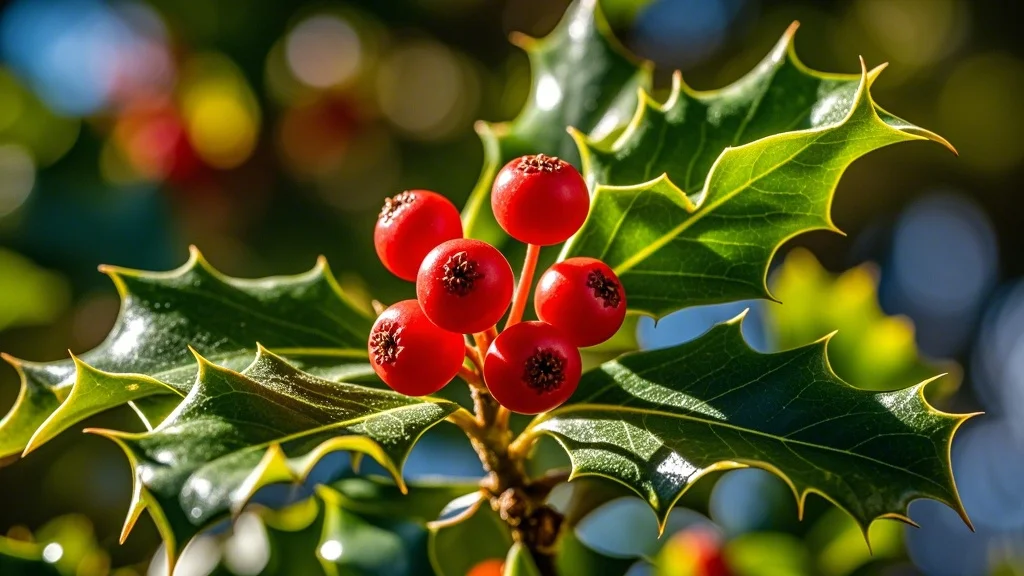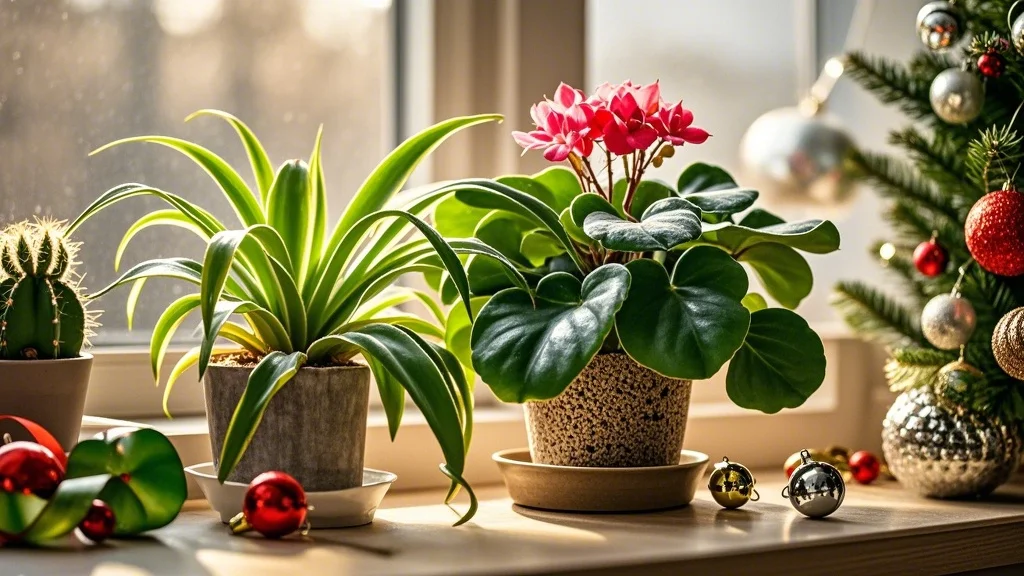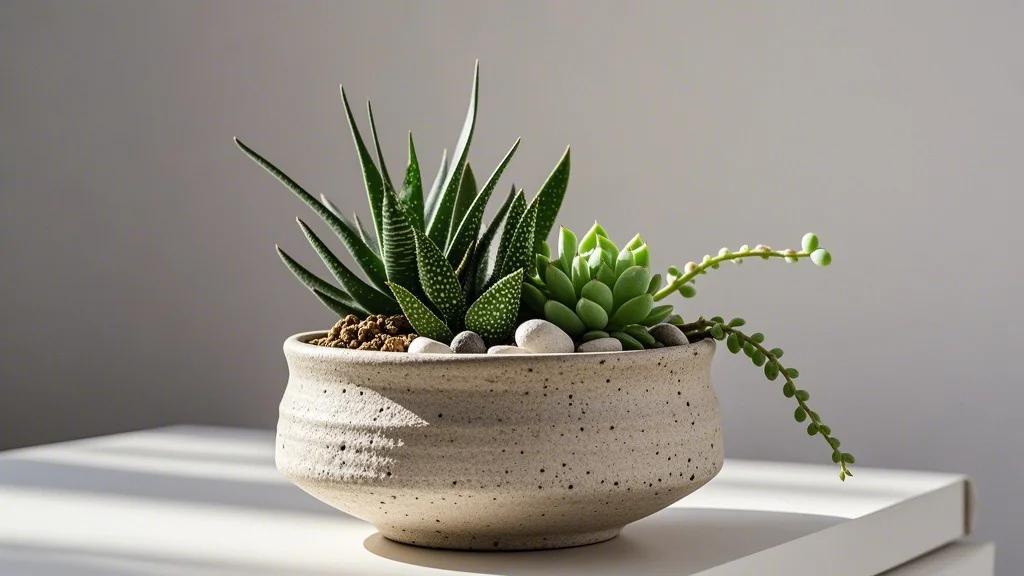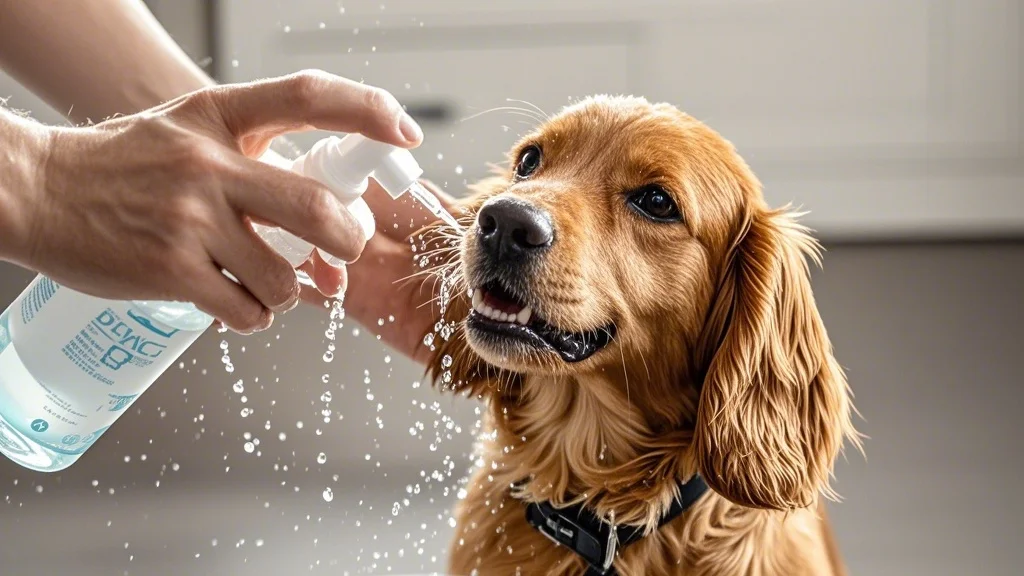As the holiday season approaches, many of us eagerly decorate our homes with festive greenery. However, for pet owners, this joyous time can also bring unexpected dangers. Many popular holiday plants are toxic to cats and dogs, posing serious health risks if ingested. This comprehensive guide will help you navigate the world of seasonal plants, ensuring a safe and merry celebration for both you and your furry companions.
Contents
Common Toxic Holiday Plants

Poinsettia
Contrary to popular belief, poinsettias are not as toxic as once thought. However, they can still cause mild irritation to pets.
-
Symptoms: Drooling, vomiting, diarrhea
-
Severity: Mild to moderate
-
Pet safety tip: Keep out of reach, but don’t panic if small amounts are ingested
Mistletoe
Both American and European varieties of mistletoe can be dangerous to pets.
-
Symptoms: Gastrointestinal upset, cardiovascular problems, low blood pressure
-
Severity: Moderate to severe
-
Pet safety tip: Opt for artificial mistletoe or keep real mistletoe securely contained
Holly
Holly berries and leaves contain toxic compounds that can harm pets.
-
Symptoms: Vomiting, diarrhea, drooling, loss of appetite
-
Severity: Moderate
-
Pet safety tip: Use artificial holly for decorations
Amaryllis
The bulbs of the amaryllis plant are particularly toxic to pets.
-
Symptoms: Vomiting, depression, diarrhea, abdominal pain
-
Severity: Moderate to severe
-
Pet safety tip: Keep amaryllis plants elevated and out of reach
Lilies
Lilies are extremely toxic to cats, even in small amounts.
-
Symptoms: Kidney failure, vomiting, lethargy
-
Severity: Severe (can be fatal for cats)
-
Pet safety tip: Avoid lilies entirely in homes with cats
Christmas Tree
While not toxic itself, Christmas trees can pose other dangers:
-
Pine needles: Can cause gastrointestinal irritation if ingested
-
Tree water: May contain fertilizers or bacteria harmful to pets
-
Pet safety tip: Cover tree water and regularly clean up fallen needles
Safe Alternatives for Holiday Decorating

Fortunately, there are many pet-friendly options for holiday greenery:
-
Artificial plants: The safest option, with a wide variety of realistic-looking choices available
-
Christmas Cactus: A beautiful, pet-safe flowering plant
-
Rosemary: Festive, aromatic, and non-toxic to pets
-
Boston Fern: Adds lush greenery without toxicity concerns
-
Phalaenopsis Orchids: Elegant and safe for cats and dogs
-
African Violets: Colorful, compact, and pet-friendly
-
Spider Plant: Easy to care for and non-toxic
Creating a Pet-Safe Holiday Environment
Strategic Placement
- Place potentially harmful plants in hanging baskets or on high shelves
- Use baby gates to restrict access to rooms with holiday plants
- Create designated pet-free zones for delicate or toxic decorations
Training and Deterrents
- Use positive reinforcement to teach pets to avoid plants
- Apply pet-safe bitter sprays to discourage chewing
- Provide alternative chew toys and treats to redirect attention
Supervision and Awareness
- Monitor pets closely when introducing new plants or decorations
- Be aware of changes in pet behavior that might indicate plant ingestion
- Keep your veterinarian’s contact information easily accessible
Recognizing and Responding to Plant Poisoning
Common Symptoms of Plant Toxicity in Pets
- Gastrointestinal distress (vomiting, diarrhea)
- Drooling or foaming at the mouth
- Difficulty breathing
- Lethargy or weakness
- Loss of appetite
- Changes in urination habits
- Seizures or tremors
Immediate Actions if You Suspect Plant Poisoning
- Remove any remaining plant material from your pet’s mouth
- Do not induce vomiting unless instructed by a professional
- Collect a sample of the ingested plant for identification
- Contact your veterinarian or a pet poison hotline immediately
- Monitor your pet closely and follow professional advice
Year-Round Plant Safety for Pets
While holiday plants often get the spotlight, it’s crucial to maintain a pet-safe environment throughout the year.
Common Year-Round Toxic Plants
-
Sago Palm: All parts are toxic, especially the seeds
-
Aloe Vera: While beneficial for humans, it’s harmful to pets if ingested
-
Philodendron: Can cause oral irritation and swelling
-
Pothos: Popular but toxic, causing mouth and throat irritation
-
Dieffenbachia: Also known as “dumb cane,” it can cause severe mouth burning
Creating a Pet-Friendly Indoor Garden
- Research plants before bringing them home
- Use raised planters or hanging baskets for toxic plants
- Provide pet grass or catnip as safe alternatives for curious pets
- Regularly inspect plants for signs of chewing or damage
- Consider creating a dedicated “pet garden” with safe, edible plants
Educating Family and Guests
During the holiday season, it’s not uncommon to have guests or family members who may be less aware of pet safety concerns. Here are some tips to ensure everyone is on the same page:
- Inform visitors about which plants are off-limits to pets
- Ask guests not to feed pets any holiday treats without permission
- Place signs near toxic plants as a reminder
- Designate a family member to be responsible for pet safety during gatherings
- Provide a list of emergency contacts, including your veterinarian, for pet sitters
Balancing Aesthetics and Safety
Creating a festive atmosphere while prioritizing pet safety doesn’t mean sacrificing style. Here are some ideas to maintain a beautiful holiday home:
- Use pet-safe garlands and wreaths made from artificial materials
- Incorporate LED candles instead of real ones to avoid fire hazards
- Choose shatterproof ornaments to prevent injury from broken glass
- Use pet-friendly essential oils for holiday scents (avoiding toxic ones like pine and cinnamon)
- Create centerpieces with pet-safe flowers and greenery
Conclusion
The holiday season is a time for joy and togetherness, and with proper precautions, it can be safe and enjoyable for everyone in the household, including our beloved pets. By being aware of potential plant hazards, opting for pet-safe alternatives, and creating a mindful environment, you can deck the halls without worry. Remember, a little planning goes a long way in preventing emergencies and ensuring a happy, healthy holiday season for all family members, furry or otherwise.
As you prepare for the festivities, take the time to pet-proof your decorations and educate yourself about the plants entering your home. With these guidelines in mind, you can create a winter wonderland that’s both beautiful and safe for your four-legged friends. Here’s to a season filled with wagging tails, purring companions, and peace of mind for pet owners everywhere!









